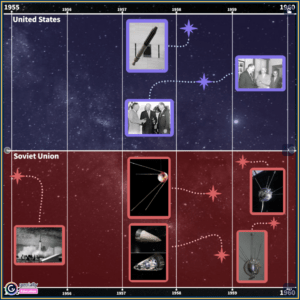Technology has become a fundamental part of our daily life. Nowadays, every modern process uses computers to perform their actions. Until the late 1980s, all college assignments were done either by hand, or by typewriter. Today, in the twenty-first century, everything is done on computers. In the last century, letters and telegrams were used to communicate written material over long distances. However, today just one click is enough to send a message to the other side of the world. Technology is ubiquitous; now all banks and online stores place absolute trust in the internet to make bank transfers of often astonishingly large monetary sums. However, it is not all a bed of roses for the internet. Just as every thesis has its antithesis, the internet world found its executioner in computer viruses. There are many unfortunate people who, because of computer viruses, end up losing everything, from their images and music, to valuable works, and even thesis projects. We all know about the existence of viruses, but very few of us really understand how they work, how they propagate through the web, and the magnitude of the effects of viruses on our devices and our lives.

Hated by all, the computer virus is the number one enemy of all who own a laptop, a computer, tablet, and even a smartphone. Its construction is simple but can be devastating. The virus is a piece of software based on various characteristics and with innumerable “themes.” In the same way as a biological virus, it attacks the host (in this case, the computer) and begins to infect many others to increase its reach. Basically, the virus is hidden in a program or document and is released when these files are executed. This plague of the electronic age emerged in the 1970s, initially only for programmers to demonstrate their skills. However, it ended up becoming a very lucrative criminal activity. Today, there are malware (malicious software) being spread by email or infected sites, and even by artificial intelligence, which simulates real conversations in chats to convince the victim to click on a contaminated link.1
The malicious software can be of various types, of which two are the most common in the world of computer science. Perhaps the best known type of malware is the Trojan Horse, which is as treacherous as its namesake in Greek mythology. A Trojan typically disguises itself as a normal and benevolent application during its installation. The users who receive the Trojans are convinced to install them and execute them because they have received them from a trusted source. Once executed, a Trojan can cause severe damage, such as capture of bank passwords, credit card data, social network passwords, etc. Another common group of malware are worms, a particularly harmful subclass of viruses that are distinguished by their ability to spread without human action, using all communication capabilities available in a device to self-distribute.2 Worms replicate themselves inside an infected device, creating thousands of copies of itself, in order to spread more quickly and prevent an antivirus from removing them before causing damage and contaminating other devices. Worms are also used to open ports on the infected user’s device, allowing a hacker total remote control of all available resources on the infected device.3
A colossal number of viruses churn through the internet, but among all the stories that can be told about viruses, there is one that stands out among all the others: the virus “I Love You,” the one that took advantage of the innocence of a secret message of love that destroyed 45 million computers! The story behind the catastrophic message created by Onel de Guzman, will surprise many people, including you. Without further ado, the story of one of the most lethal thesis projects in history: I Love You.4

On May 4, 2000 computer networks around the world were invaded by the virus that has until today earned the title of fastest propagation invader. In a matter of hours, the “Love Bug,” as the virus became known, infected more than three million machines. It came with a message in which both the subject “I Love You” and the attachment “Love-Letter-For-You” appealed to the curiosity of the recipient. To further disarm the victim’s defenses, the e-mail came almost always in the name of a friend or acquaintance.6 Although it had no destructive load, the love letter caused deep havoc by producing an unprecedented e-mail branch that congested servers around the world, causing billions of dollars of losses for companies around the world. According to the consulting company Computer Economics, the losses were around twelve million dollars.7 Not even the “Code Red” and “Sircam” viruses, which in 2001 caused an injury of 3 million and 1.5 million dollars, respectively, overcame this virus that certainly entered into history as the most devastating of the global network of computers.8
“The teachers did not like my work, they rejected my thesis. They said it was against the policy of the faculty and everything just because I used the word steal instead of access. It was a simple matter of vocabulary,” recalls the “Clyde Barrow” of computer hacking and author of one of the greatest computer disasters in history.9

The truth is that his idea was brilliant, as well as perverse. If the virus “I love you” spread so quickly, it was because everyone liked the idea of receiving an anonymous love letter. The famous love letter was the product of the disgust of a disgruntled student with his faculty, the revenge of Onel, because they rejected his thesis. Clerks, stockbrokers, politicians, firemen, or journalists, people here and there, opened the message of the supposed admirer or secret lover who began his letter proclaiming his love. Just by clicking it, the program created by Onel de Guzman began to work, that is, to eliminate. First, the virus infected the computer itself and destroyed the information on the hard disk. Then the virus forwarded the electronic message to all the addresses that the receiver had stored, in an unstoppable chain. Within twenty-four hours three million computers had been infected and within a week there were already more than 45 million computers unusable.10 Probably the final number of victims of what some experts still qualify as the most virulent, devastating, and costly virus in history, will never be known. The teachers of the AMA School of Computer Science could not believe it when, three months after receiving the thesis of their model student, they realized that the virus that was going around the world worked exactly as Onel had explained in his dissertation. His thesis, which he called “The Trojan Horse,” still circulates on the Internet today and is the bible for many computer hackers, teachers, students, and curious people.11
What happened to the author of one of the most serious cyber catastrophes in history? Absolutely nothing. The Government of the Philippines had with Onel case its first cybercrime in its history. The Philippine authorities found a total absence of cybercrime legislation with which to prosecute the alleged perpetrator. After the appearance of the virus “I love you,” the government of the Philippines created a law on computer crimes, but it could not be applied retroactively and therefore did not affect the author of the love letter.[12: Robert Frank, “Lacking Laws, The Philippines Throws Out ‘Love Bug’ Case,” Wall Street Journal – Eastern Edition, (August 22, 2000): 20.]

Onel de Guzman just needed one computer and an internet connection to be able to invade more than 45 million computers in just one week.12 De Guzman’ virus was so powerful that it was even able to penetrate one of the most powerful cybernetic systems in the world, the Pentagon of the United States of America. Yes, it is no joke, a college student was able to infect four classified military systems of one of the safest and most sheltered facilities on the planet.13 If the Philippine was able to crash one of the most powerful systems in the world, monitor financial accounts, steal personal information and messages, we must be ever vigilant before we casually click on any email attachment.14 A computer virus, like a biological one, does not distinguish social condition, economic power, political position, or any other difference. They are there, waiting for a click, which will allow them to do what they do best: destroy everything in their way. Let’s be always alert.
- Funk & Wagnalls New World Encyclopedia, August 2016, s.v. “Computer Virus.” ↵
- Roberta D. Anderson, “Viruses, Trojans, and Spyware, Oh My; The Yellow Brick Road to Coverage in the Land of Internet Oz ,” Tort Trial & Insurance Practice Law Journal no. 2 (June 2013): 529. ↵
- Salem Press Encyclopedia Of Science, January 2017, s.v.”Computer viruses and worms,” by Linda Volonino. ↵
- “I Love You’ virus,” Journal of Property Management 70, no. 2 (March 2005): 9. ↵
- Adam Cohen, “School for Hackers,” Time Magazine 155, no. 21 (May 2000): 59. ↵
- Mark Ward, “A decade on from the I Love You bug,” BBC News (May 2010), 5. ↵
- Bob Edwards, “Analysis: Projected cost of damages caused by the ‘Love Bug’ computer virus,” Morning Edition (May 2000): 23-24. ↵
- Keith A. Rhodes, Information Security: Code Red, Code Red II, and SirCam Attacks Highlight Need for Proactive Measures (Washington D.C.: U.S. General Accounting Office, 2001), 23-24. ↵
- Rajiv Chandrasekaran, “Student Proposed Virus in Thesis; ‘Love Bug’ Probe Focuses on Filipino College Senior,” The Washington Post, (May 2000): 7-8. ↵
- Frank Prince, “Love Bug’ Redux: Keeping Alert to Danger,” Community Banker Journal, (June 2000): 45. ↵
- Rajiv Chandrasekaran, “Student Proposed Virus in Thesis; ‘Love Bug’ Probe Focuses on Filipino College Senior,” The Washington Post, (May 2000): 7-8. ↵
- Bob Edwards, “Analysis: Projected cost of damages caused by the ‘Love Bug’ computer virus,” Morning Edition (May 2000): 23-24. ↵
- Mark Lander, “A Filipino Linked to ‘Love Bug’ Talks About His License to Hack,” The New York Times, (October 21, 2000): 1. ↵
- Karen D. Loch,”Threats to Information Systems: Today’s Reality, Yesterday’s Understanding,” MIS Quarterly 16, no. 2 (June 1992): 177. ↵



80 comments
Raymond Davila
This article was very informative because it not only discussed an issue that is still prevalent today and will still be wide spread in the future but also discussed a virus that was so damaging that it destroyed 45 million computers but also the pentagon. I was not aware that this event even happened and now that a i am i’m glad that i was still a baby at the time this happened. Especially since this was the first and most devastating of the trojan horse viruses.
Arianna Kennet
This article was definitely very interesting and served as an eye opener on what viruses can do and how fast they can spread. I must say, that Onel is a genius. He knew what would get the peoples attention and used that as a way to spread the virus and get them opening it. Its also interesting how one virus can wipe out millions of computers.
Elias Garza
The internet is just as scary as it is fun. The web is such a big place with so many anonymous people who do not care for you at all. You just have to be careful with how you are investing your time when you get on the internet. This article is a great example of what the internet provides and how all that can turn around within minutes.
Maria Esquivel
I have heard a bit about this virus but never imagined how severe it was. It’s crazy to think how someone could make something like this and destroy over 45 million computers in a week. This reading really made me more aware of what crazy things could be on the internet or in e-mails. Definitely going to be more conscious before I click anything. This was a nice read!
Auroara-Juhl Nikkels
I had never heard of this computer virus before reading your article. I think that it is crazy how far technology has come, even since the 1990s. I also think it is crazy that nothing happened to the man who created the virus that destroyed millions of computers. I have to wonder what he did with the rest of his life after that. Even if you did not get arrested, people all over know who you are and what you did. Did he get an IT job after? Did he move? I’m curious.
Andrew Dominguez
The article is important since the world we live in is so based on technology. What is crazy to think about is the fact a computer can be hacked just by a simple email to a computer. The best part is how it hacked the pentagon, probably one of the safest places in the world. The good thing is this wasn’t as bad as it seems. Now the pentagon is prepared for viruses like this. There was good to come of this virus, and that is people will be more prepared.
Miranda Alamilla
This article, above all else, is very informative and very important to read. From worms to the Trojan Horse, fatal viruses exist in copious numbers. It scares me to read about things like this because technology is such a constant in mine, and most people’s, daily lives. However, reading about Onel was very interesting because, although he made a lot of damage, he is the reason the cyber breaching is a criminal act and stated in Philippine law. It’s crazy to think that something as simple as “I Love You” can cause something so devastating.
Constancia Tijerina
This article started off with a descriptive background which then lead to the horror show. Its incredible how far the world has grown in the technological world. What I found most intriguing is how a single virus can wipe out more than 45 million computers within a week. I find it some what funny and dramatic how a single student who wrote an entire thesis about this virus, got rejected just because of one word and not only proved his professor wrong but showed the whole world the dangers within the internet.
Luis Morales
This article was interesting because it talks about technology and how much technology has changed society. My favorite part was learning about Onel De Guzman and how he brilliantly created a guide to hack computers. It is curious to me how he knew people would enjoy receiving an “I Love You” letter. This idea shows the kid’s brilliance and talent.
Erin Vento
Its so weird to be reminded how easily things you do on the internet can go South, and how you have to be as careful with everything you do on the internet as the things you do in real life. I had never ever heard of this virus and I’m a little surprised. This was such a crazy story and was so interesting. It really makes you think.